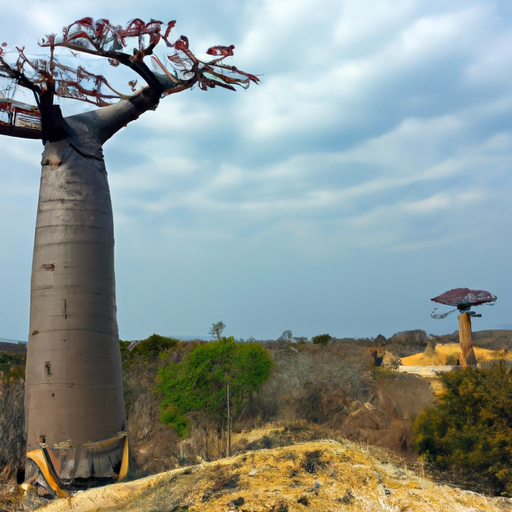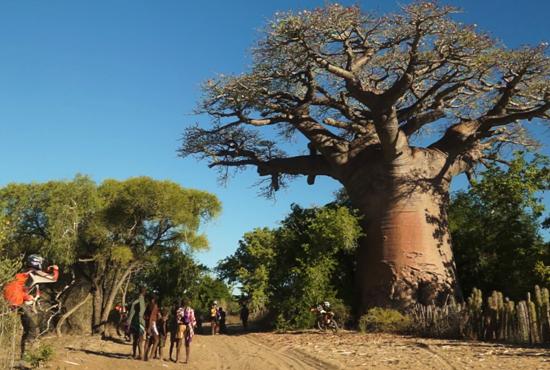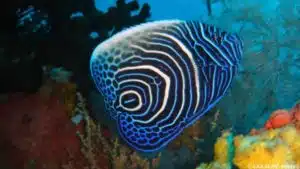Introduction to the floral richness of Madagascar
General presentation of the biodiversity of Madagascar
Madagascar, this unique island located off the coast of East Africa, is often considered a true paradise for nature lovers. Indeed, this insular land is home to exceptional biodiversity, with over 90% of its plant species found nowhere else on the planet. This floral richness is the result of millions of years of geographical isolation, allowing Madagascar’s vegetation to develop unique and fascinating characteristics.
The biodiversity of Madagascar is a true mosaic of forms and colors, ranging from majestic baobabs to rare and delicate orchids. This plant diversity plays a crucial role in the balance of local ecosystems, providing habitats and resources for a multitude of animal and plant species. The forests, arid areas, and mangroves of Madagascar are all biomes that contribute to the richness and complexity of its natural environment.
Importance of flora in the Malagasy ecosystem
The flora of Madagascar plays a central role in maintaining the island’s ecosystems. Local plants, such as baobabs and orchids, are essential for the survival of many animal species, including lemurs, birds, and insects. Furthermore, many Malagasy plants possess medicinal properties used by local communities for generations. These plants contribute not only to the health of ecosystems but also to that of human populations.
The plant biodiversity of Madagascar
is also a major economic asset. Botanical tourism attracts thousands of visitors every year who come to discover this unique natural wealth in the world. Companies like Madagascar Trip’s & Pic’s offer tailor-made tours to allow nature and photography enthusiasts to explore these floral gems while respecting the environment. This tourist activity contributes to raising awareness and conserving this exceptional biodiversity.
The majestic baobabs of Madagascar
The different species of baobabs
Madagascar is famous for its baobabs, emblematic trees that dominate the landscape with their imposing silhouette and massive trunk. There are six species of baobabs endemic to Madagascar, including Adansonia grandidieri, Adansonia rubrostipa, and Adansonia za. Each species has unique characteristics, such as size, trunk shape, and flowering, which adds to the diversity and beauty of these fascinating trees.
Baobabs play a crucial role in local ecosystems. Their massive trunks can store thousands of liters of water, which is crucial for the survival of plants and animals during periods of drought. Additionally, baobabs provide shelter and food resources for many species, including bats, birds, and insects. The conservation of these trees is therefore essential to maintaining the ecological balance of Madagascar.
The ecological role of baobabs
The baobabs of Madagascar are much more than just majestic trees; they are vital ecological pillars for the environment. Their ability to store large amounts of water in their trunks allows them to survive in arid conditions and provide a valuable water source for other species during droughts. Baobabs are also essential habitats for many animal species, providing shelters and nesting sites for birds and bats.
In addition, baobabs play a key role in preventing soil erosion. Their deep and extensive roots stabilize the soil, reducing the risk of landslides and loss of fertile soil. Local communities also use baobabs for their fruits, leaves, and bark, which have various food and medicinal uses. Preserving these magnificent trees is therefore essential for the health of Madagascar’s ecosystems and human populations.
The rare orchids of Madagascar
Endemic orchid varieties
Madagascar is home to an incredible diversity of orchids, with over 1,000 documented species, of which approximately 85% are endemic. Among the most remarkable orchids is the Angraecum sesquipedale, also known as the star orchid of Madagascar. This orchid is famous for its long nectar spurs, which were studied by Charles Darwin and perfectly illustrate the coevolution between plants and their pollinators.
Madagascar orchids are not only beautiful, but they also play an important role in the ecosystem by attracting specific pollinators, thereby contributing to the reproduction of many plants. The diversity of shapes, colors, and scents of Malagasy orchids makes them a subject of fascination for botanists and flower enthusiasts worldwide. Madagascar Trip’s & Pic’s tours allow visitors to discover these floral treasures in their natural habitat.
Conservation and protection of orchids
Conserving Madagascar orchids is a priority due to their rarity and vulnerability. Many orchid species are threatened by deforestation, climate change, and illegal collection. Conservation efforts include the creation of nature reserves, restoration of degraded habitats, and raising awareness among local communities about the importance of protecting these unique plants.
Madagascar’s biodiversity, offering visitors the opportunity to actively contribute to conservation by participating in reforestation and orchid protection projects.
Other endemic plants of Madagascar
Unique palm trees of Madagascar
Madagascar is also famous for its palm trees, of which more than 170 species are endemic. Among the most iconic palm trees, there is the Ravenea rivularis, also known as the majestic palm, and the Dypsis decaryi, or triangle palm, which is distinguished by the unique triangular shape of its trunk. These palm trees add an exotic touch to the Malagasy landscapes and are essential for local biodiversity.
The palm trees of Madagascar play an important ecological role by providing shelters and food resources for many animal species. Their fruits and leaves are used by local communities for various applications, ranging from food to construction. The conservation of these palm trees is therefore essential to preserve Madagascar’s biodiversity and support the livelihoods of local populations.
Local medicinal plants
Madagascar has a rich tradition of plant-based medicine, with many species used for their therapeutic properties. Among the most well-known medicinal plants, there is the Catharanthus roseus, or Madagascar periwinkle, whose alkaloids are used in the treatment of certain cancers. Other plants, such as Ravintsara and Mandravasarotra, are used for their antiviral and anti-inflammatory properties.
Medicinal plants from Madagascar are not only crucial for the health of local populations, but they also represent a valuable source for global pharmaceutical research. The preservation of these plants and their habitats is therefore essential to ensure access to these natural resources and to continue discovering potential new drugs. Madagascar Trip’s & Pic’s offers discovery tours of medicinal plants, allowing visitors to learn more about the traditional use of plants and ongoing conservation efforts.
The floral ecosystems of Madagascar
The rainforests
The rainforests of Madagascar are among the most biodiverse ecosystems on the island. These forests, located primarily on the east coast, are home to an incredible variety of plants, many of which are endemic. The forests of Anjanaharibe-Sud and Masoala are examples of these lush ecosystems, where giant trees, tree ferns, and rare orchids create a unique and fascinating environment.
These forests play a crucial role in climate regulation, water conservation, and soil protection. They also serve as refuges for many animal species, including lemurs, chameleons, and endemic birds. Deforestation and climate change threaten these ecosystems, but conservation efforts, like those supported by Madagascar Trip’s & Pic’s, aim to protect and restore these precious habitats.
Arid zones and their adapted plants
In contrast to the humid rainforests, the arid areas of Madagascar, such as the Isalo Plateau and the Tsingy de Bemaraha National Park, are home to a flora adapted to dry conditions. These regions are characterized by succulent plants, cacti, and drought-resistant shrubs that have developed unique adaptations to survive in harsh environments.
Plants in arid regions play a crucial role in erosion prevention and water conservation. They also provide shelter and food resources for local animal species. Preserving these arid areas and their unique flora is essential for maintaining Madagascar’s biodiversity and supporting local ecosystems. Madagascar Trip’s & Pic’s offers exploration tours of these arid landscapes, allowing visitors to discover the beauty and resilience of these adapted plants.
Tourism and botanical exploration in Madagascar
A must-visit for flora enthusiasts
Madagascar is a top destination for flora and botanical enthusiasts. Among the must-visit sites is the Avenue of the Baobabs, an iconic location where majestic baobabs line a red dirt road. Ranomafana National Park is another site not to be missed, with its humid tropical rainforests harboring an incredible diversity of plants and animals.
The Andasibe-Mantadia National Park is also a privileged place for the observation of plants, especially rare orchids and tree ferns. Madagascar Trip’s & Pic’s offers specialized tours for botany enthusiasts, offering guided tours by local experts who share their in-depth knowledge of Malagasy flora. These tours allow visitors to discover the floral treasures of Madagascar while contributing to their conservation.
Tips for Respectful Exploration
Exploring the floral richness of Madagascar requires following certain rules to minimize the impact on the environment. It is essential to follow the marked trails and not pick the plants, even if they seem abundant. The collection of plants and seeds is strictly regulated to protect endemic and endangered species. Madagascar Trip’s & Pic’s encourages visitors to adopt responsible travel practices and respect local conservation guidelines.
In addition, it is recommended to travel with local guides who are familiar with Madagascar’s ecosystems and plants. These guides can not only enhance the visiting experience by sharing their expertise but also ensure that exploration is done in a respectful and sustainable manner. By choosing tours with Madagascar Trip’s & Pic’s, visitors support conservation efforts and local communities, while discovering the unique beauty of Madagascar’s biodiversity.
Conclusion
Madagascar is an exceptional destination for nature and botany lovers. Its floral richness, from majestic baobabs to rare orchids, unique palm trees, and medicinal plants, offers an unforgettable experience for visitors. Preserving this unique biodiversity is essential to maintain the balance of ecosystems and support local communities.
Madagascar Trip’s & Pic’s offers personalized tours that allow visitors to discover the island’s floral richness while contributing to its conservation. Whether you are a nature enthusiast, an adventurer, a cultural explorer, or a photography lover, Madagascar Trip’s & Pic’s offers immersive and environmentally friendly experiences. Explore the wonders of Madagascar’s biodiversity and contribute to its preservation with Madagascar Trip’s & Pic’s.
FAQ
What are the species of baobabs found in Madagascar?
Madagascar is home to six endemic species of baobabs: Adansonia grandidieri, Adansonia rubrostipa, Adansonia za, Adansonia madagascariensis, Adansonia perrieri, and Adansonia suarezensis. Each species has unique characteristics and plays an essential role in the local ecosystem.
Why is Madagascar so rich in plant biodiversity?
The richness of Madagascar’s biodiversity is due to its geographical isolation for millions of years, allowing species to develop in unique ways. The island’s climatic and geographical variations have also contributed to this exceptional diversity.
How can one contribute to the conservation of Malagasy plants?
One can contribute to the conservation of Malagasy plants by supporting local conservation initiatives, participating in reforestation projects, and choosing sustainable tourism routes, such as those offered by Madagascar Trip’s & Pic’s.
What are the best times to visit Madagascar to see flowers?
The best time to visit Madagascar and observe flowers is during the rainy season, from November to April, when vegetation is in full bloom. However, each region has its own flowering seasons, so it is advised to plan according to the species you wish to see.
Are there regulations for plant collection in Madagascar?
Yes, plant collection in Madagascar is strictly regulated to protect endemic and endangered species. It is prohibited to pick plants in national parks and nature reserves without authorization. Visitors are encouraged to respect these rules to contribute to the conservation of Madagascar’s biodiversity.
“`







